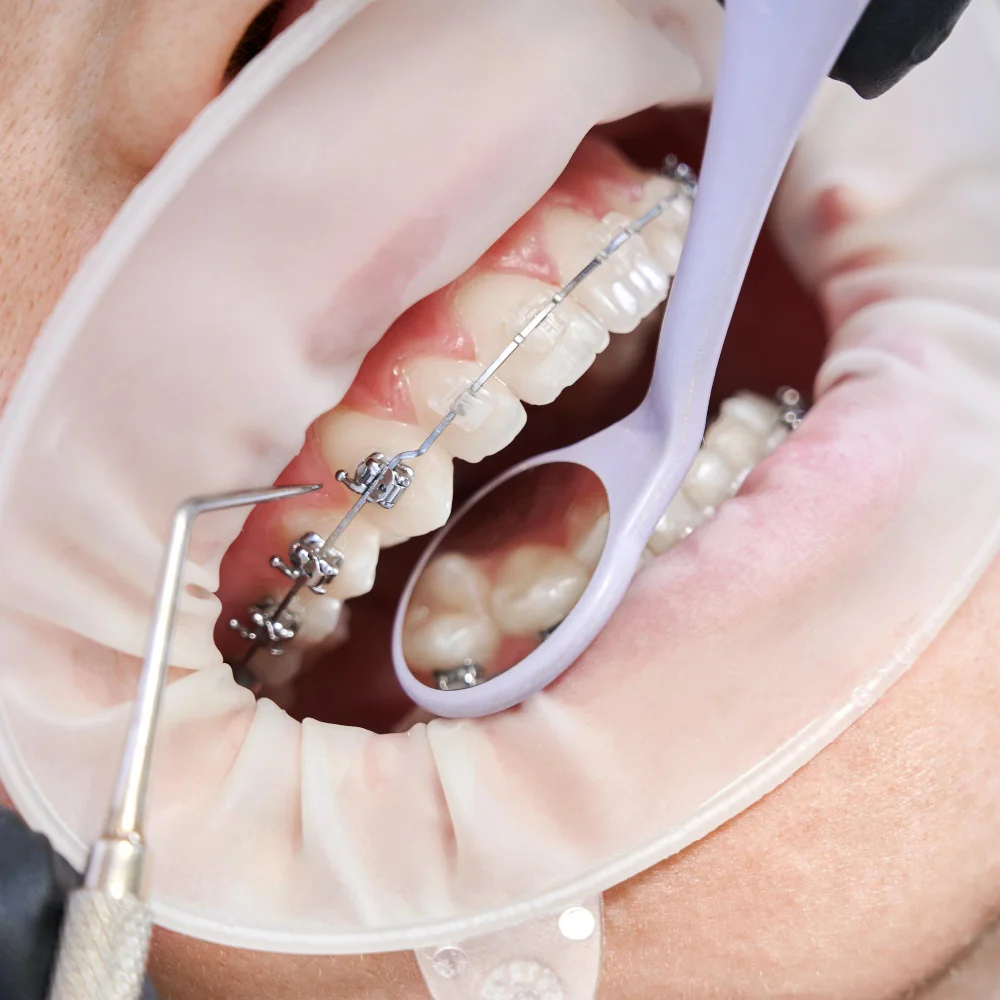After crowns and bridges are placed, the surrounding gum tissue may feel sensitive. This is a natural part of the healing process and usually fades within a few days. While the tooth is no longer fully natural, it still relies on the health of the surrounding structures. Keeping the gumline clean and avoiding pressure on the new crown during this period can reduce inflammation and prevent damage. A cosmetic dentist will offer post-placement instructions based on how the crown fits, what material it’s made from, and your bite. Following these directions carefully supports long-term success.
Daily Care Habits
Brushing and flossing remain essential after receiving crowns and bridges. The restoration covers the visible part of the tooth, but bacteria can still accumulate near the gumline or under the edge of a bridge. If left undisturbed, plaque may lead to gum inflammation or decay in the surrounding teeth.
Using a soft-bristled toothbrush and low-abrasive toothpaste helps preserve the crown’s surface. Flossing around the area supports tissue health. Specialized tools can also help clean under a bridge. A dentist may suggest products based on the patient’s mouth structure and needs.
Watching for Wear
While implants are designed to withstand daily use, they are not immune to damage. Chewing on hard foods or grinding teeth at night places unnecessary stress on restorations. Over time, this can lead to cracks, loosened bridges, or chipped porcelain.
If nighttime grinding is an issue, a dentist may recommend a custom mouthguard. This can protect the new crown from unnecessary strain. Patients who avoid chewing ice or hard candies are less likely to see premature wear or fractures.
Gum and Bone Support
Healthy gums and bone keep crowns and bridges stable. Inflammation or gum recession around a crowned tooth can expose its base, which affects appearance and structural integrity. Regular dental visits allow for early detection of these changes. Bone loss in the area surrounding a bridge can shift how the bite feels and change how it fits. Routine cleanings and exams support overall health and help maintain balance in the mouth. If changes occur, a dentist may adjust the bite to avoid uneven pressure.
Crowns and bridges require long-term monitoring. A cosmetic dentist will examine the restoration for small chips, loosening, or signs of wear that could develop into bigger issues. These visits also help detect problems with the supporting teeth or gum tissue. Patients should report any discomfort, unusual movement, or bite changes between visits. Most issues, when addressed early, can be corrected without replacing the entire restoration.
Appearance Over Time
Even high-quality implants may lose some of their shine or develop minor discoloration near the gumline. Certain foods, beverages, and lifestyle habits affect how these restorations age. A dentist can recommend professional cleanings that restore brightness and remove surface stains without damaging the crown. Maintaining appearance requires the same consistency as maintaining function. Choosing less acidic foods and brushing regularly can help reduce staining and wear.
Take Care of Crowns and Bridges
Eating habits contribute to the long-term health. Sticky or very hard foods increase the risk of damage. A balanced diet that supports bone and gum health also benefits the longevity of restorations. Avoiding tobacco use protects both the gumline and the crown’s appearance. It also supports healing after placement and helps reduce plaque buildup.

